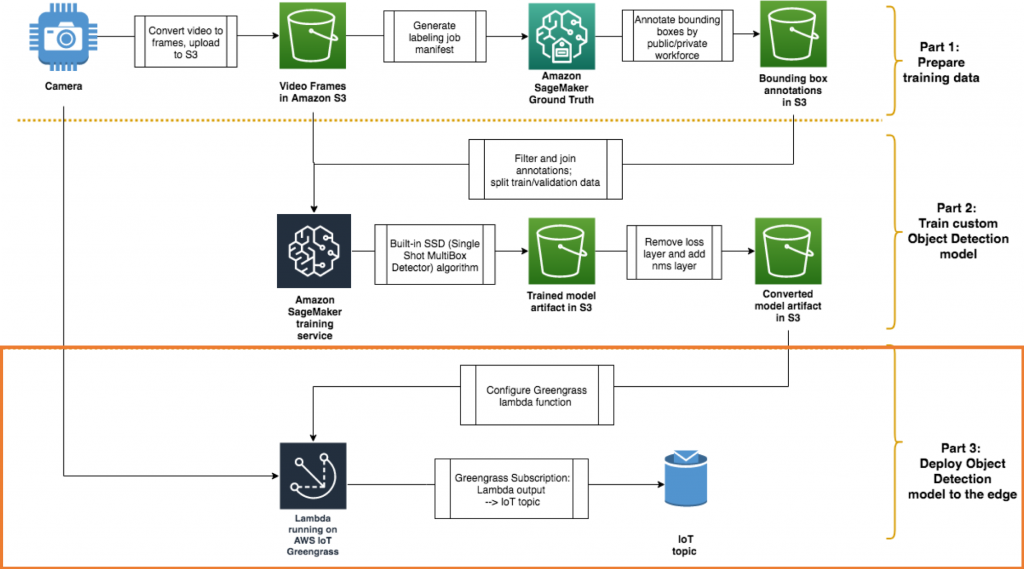The Internet of Things on AWS – Official Blog
How to get started with the new AWS IoT Core Device Location service
Introduction The new AWS IoT Core Device Location feature allows Internet of Things (IoT) devices to retrieve and report their current location without relying on Global Positioning System (GPS) hardware. Devices and clients connected to AWS IoT Core can now use cloud-assisted Global Navigation Satellite System(GNSS), WiFi scan, cellular triangulation, and reverse IP lookup techniques […]
Generating insights from vehicle data with AWS IoT FleetWise: Introduction (Part 1)
This blog post is written by Senior IoT Specialist Solutions Architect Andrei Svirida. Automakers, fleet operators, and automotive suppliers are digitalizing their products and services, and vehicle data is fueling this digitalization in several ways. First, access to vehicle data allows evolutionary improvement of existing business processes. One example of this is faster detection of […]
Building a Digital Twin with Photogrammetry and AWS IoT TwinMaker
Introduction In this blog post, you will learn how you can use photographs taken by a drone to create a 3D model of real world environments within a digital twin. Digital twins are virtual representations of physical systems that are regularly updated with data to mimic the structure, state, and behavior of the assets they […]
Use AWS IoT Core MQTT broker with standard MQTT libraries
Introduction AWS IoT Core connects Internet of Things (IoT) devices to AWS IoT and other AWS services. Devices and clients can use the MQTT protocol to publish and subscribe to messages. MQTT libraries, such as the AWS IoT Device SDKs, include open-source libraries, developer guides with samples, and porting guides so that you can build innovative IoT […]
Training the Amazon SageMaker object detection model and running it on AWS IoT Greengrass – Part 3 of 3: Deploying to the edge
Post by Angela Wang and Tanner McRae, Senior Engineers on the AWS Solutions Architecture R&D and Innovation team This post is the third in a series on how to build and deploy a custom object detection model to the edge using Amazon SageMaker and AWS IoT Greengrass. In the previous 2 parts of the series, we walked […]
Your guide to find AWS IoT for Automotive at CES 2023
Overview The Consumer Electronics Show (CES) 2023 will take place Jan 5-8 in Las Vegas, USA. CES is one of the most influential global technology events, covering nearly every aspect of the technology sector. You can find Amazon Web Services (AWS) alongside Amazon Smart Vehicles in the “Amazon for Automotive” exhibit to check out the […]
Enable compliance and mitigate IoT risks with automated incident response
Introduction Internet of Things (IoT) devices can present unique security challenges ranging from malware, DDoS attacks, and logical or physical compromise. You can prepare for such events by having a process in place to mitigate these risks when they occur. The IoT Lens of the Well-Architected Framework provides high-level guidance on how to be prepared for […]
How to reduce latency with Amazon Kinesis Video Streams – Part 2
In this, part 2 on how to reduce latency in media managed by Amazon Kinesis Video Streams (KVS) I describe the techniques in which to configure KVS, the media producer and the media player for optimal latency settings. Then, I introduce the Amazon Kinesis Video Stream Web Viewer and perform a number of experiments on […]
How to reduce latency with Amazon Kinesis Video Streams – Part 1
In this two part series I describe how to reduce latency of streaming media managed by Amazon Kinesis Video Streams and how less than 2-second latency can be delivered with robust video quality across a variety of network conditions. Then, I provide a practical demonstration showing that with the Amazon Kinesis Video Stream Web Viewer, […]
Managing Docker container lifecycle with AWS IoT Greengrass
Introduction In this post, we will be discussing how to manage Docker container lifecycle using an AWS IoT Greengrass custom component. There are five phases in a Docker container lifecycle: create, run, pause/unpause, stop, and kill. The custom component interacts with the Docker Engine via the Docker SDK for Python to manage processes based on […]




